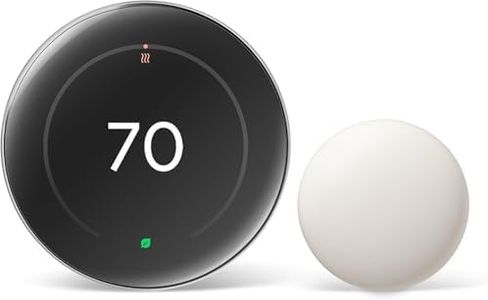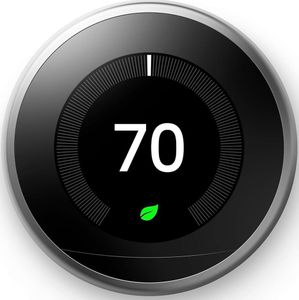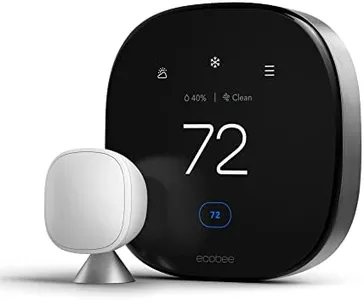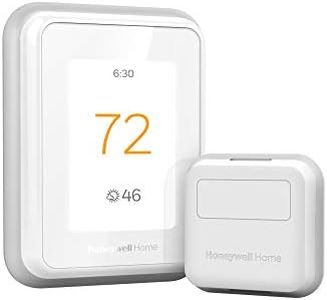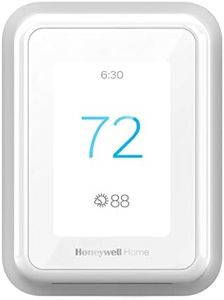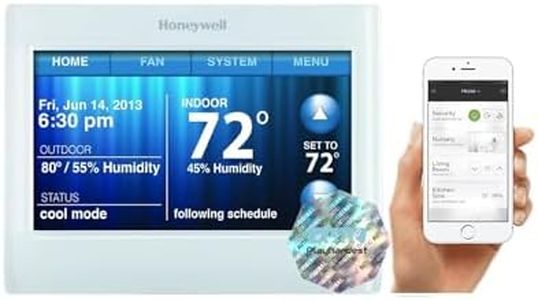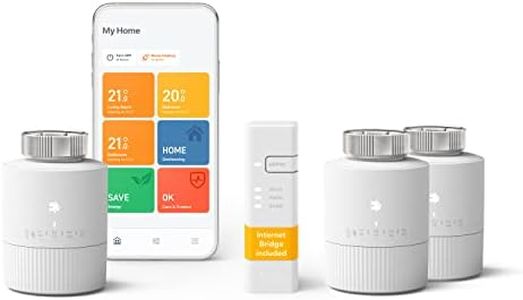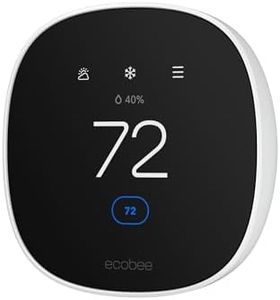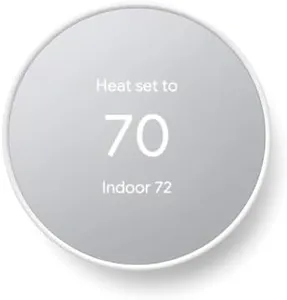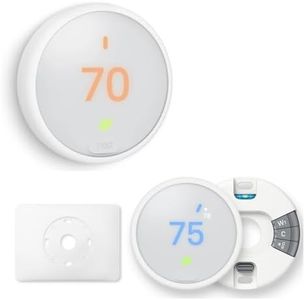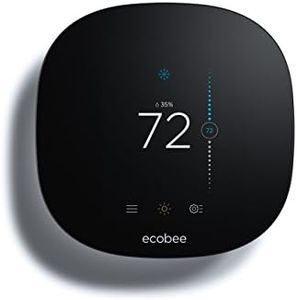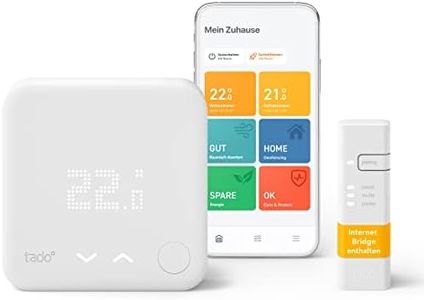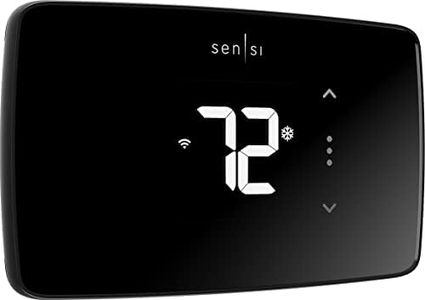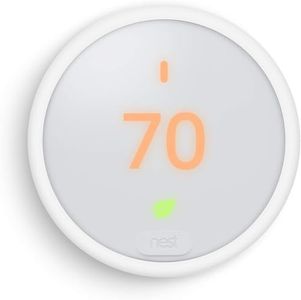We Use CookiesWe use cookies to enhance the security, performance,
functionality and for analytical and promotional activities. By continuing to browse this site you
are agreeing to our privacy policy
10 Best Wifi Thermostats
From leading brands and best sellers available on the web.Buying Guide for the Best Wifi Thermostats
Choosing a WiFi thermostat can make heating and cooling your home more convenient, efficient, and personalized. These smart devices let you monitor and adjust your home's temperature from anywhere using your phone or voice commands. When picking the best WiFi thermostat, it's important to focus on features that match your home's systems and your lifestyle, making sure it offers ease of use, compatibility, and the level of control you want.Compatibility with HVAC SystemsCompatibility refers to whether the thermostat works with your home's existing heating and cooling system, such as central heating, heat pump, or electric baseboard. This is crucial, because not all thermostats are universal, and using an incompatible one may cause issues or not work at all. You should check which heating and cooling setup you have at home, then look for a thermostat that clearly supports it. Simpler systems (just heating or just cooling) will have plenty of suitable options, but more complex systems like multi-stage or variable-speed ones may need more advanced thermostats.
WiFi ConnectivityWiFi connectivity lets the thermostat link to your home internet, enabling remote control and access to smart features. A dependable connection is important for real-time updates and control. Some thermostats handle only standard 2.4GHz WiFi, while others might work with 5GHz bands. Most homes use 2.4GHz, so it’s best to ensure your network is compatible. If your WiFi signal is weak where the thermostat sits, you might face connection problems, so consider the signal strength in that area.
App and Voice ControlThe companion app allows control from smartphones or tablets, while voice control works with assistants like Alexa or Google Assistant. These features make it easier to adjust settings without touching the thermostat. Some thermostats offer simple, user-friendly apps, while others have more advanced controls and data. If you use smart home devices and enjoy automation, look for broad compatibility and features like routines. If you want something straightforward, choose a thermostat with a simple and highly rated app.
Learning and Scheduling FeaturesLearning thermostats can automatically figure out your preferences and schedule, while standard models let you manually program heating and cooling times. Learning features work best for those with regular schedules or those who want the thermostat to adjust without constant manual changes. Manual scheduling is a good fit for users who prefer full control and predictable routines. Think about your habits and decide if you'd like the thermostat to learn from your behavior, or if you'd rather set up a predictable schedule yourself.
Geofencing and Smart SensorsGeofencing uses your phone's location to adjust the thermostat when you leave or return home, helping save energy. Some models also support remote sensors to measure temperature in multiple rooms, balancing comfort where you need it most. These are valuable if you often leave and return at different times, or if your home has rooms that are often too hot or cold. For households with unpredictable routines or big, multi-room homes, these features can make a big difference in comfort and efficiency.
Display and User InterfaceThe thermostat's display is how you check and change the temperature manually. Displays range from basic buttons and simple screens to large, color touchscreens. A good user interface makes it easier to adjust settings quickly. If you want information at a glance or have trouble seeing small displays, a bigger or clearer screen can help. If you prefer making changes on the thermostat itself instead of an app, prioritize easy-to-use controls and clear displays.
Energy Usage ReportsEnergy usage reports show how your heating and cooling habits impact your utility bills, often helping you spot ways to save. Some thermostats offer basic summaries, while others provide detailed charts and tips. If you’re interested in saving energy and understanding your habits, look for models with detailed, easy-to-understand reports right in the app. If you’re less focused on tracking energy use, this may be less important.
